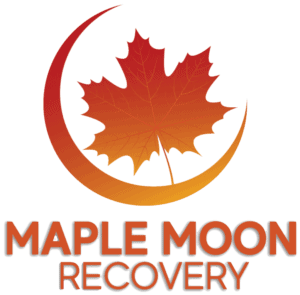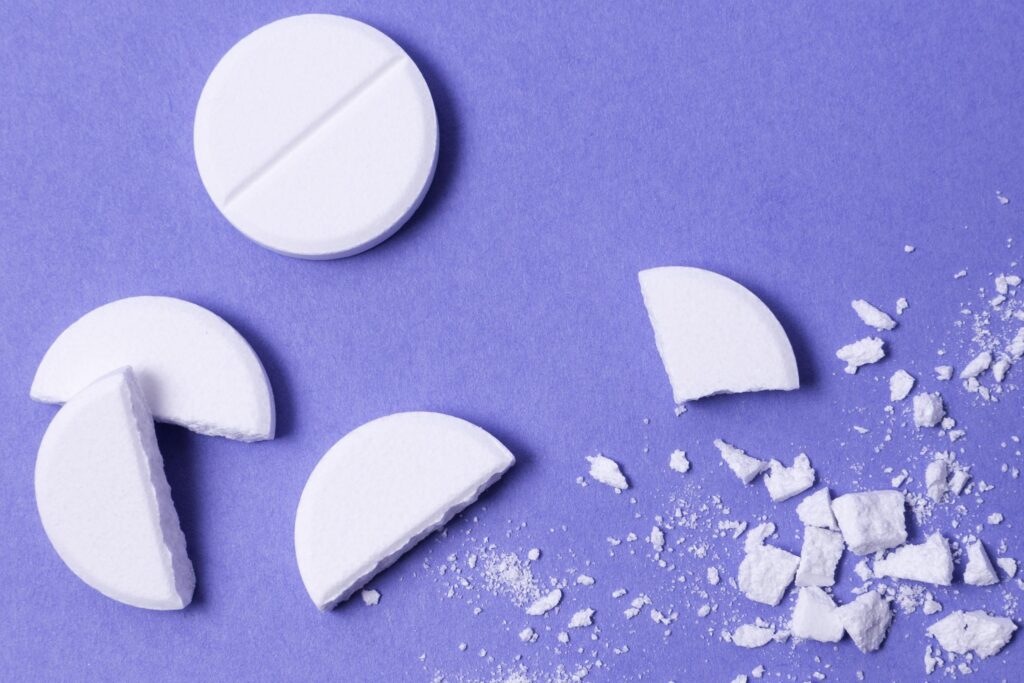How to Break Free From Smoking Oxycodone

Key Points
- The Practice of Smoking Oxycodone
- Definition and how it differs from other forms of abuse (e.g., swallowing, snorting oxycodone).
- Why some individuals choose to smoke it.
- Devastating Health Consequences
- Physical and mental health impacts.
- Overdose risks and the dangers of combining with other substances.
- How long oxycodone stays in your system and implications for misuse.
- Inpatient Medically Assisted Rehab as the Best Solution
- Comprehensive care, 24/7 supervision, and medical support.
- The importance of addressing withdrawal (including: can opioid withdrawal cause seizures?).
- Maple Moon Recovery
- Our dedicated approach to helping individuals struggling with oxycodone abuse.
- Tailored programs to break free from addiction.
- FAQs Section
Understanding the Allure and Danger of Smoking Oxycodone
Oxycodone is a potent opioid medication typically prescribed for pain management, but it is also frequently misused due to its intense euphoric effects [1]. In recent years, the practice of smoking oxycodone has gained alarming visibility. Some people mistakenly believe that inhaling the drug is a safer or quicker route to pain relief or a stronger high. However, this method can lead to shocking health complications, including heightened risks of overdose, organ damage, and long-term addiction [2].
People may also misuse oxycodone by snorting oxycodone, another alternative route of administration believed to produce faster or more intense effects. Whether snorting, injecting, or smoking oxycodone, each method carries significant risks.
At its core, oxycodone misuse isn’t merely a bad habit—it can quickly escalate into an all-consuming addiction. If you or someone you love is trapped in this cycle, know that help is available. At the end of this section, consider taking a moment to reach out for support. You deserve a chance at lasting recovery.
If you or someone you know is struggling with oxycodone abuse, please connect with our admissions team by calling or leaving a form.
What Is Smoking Oxycodone?
A Dangerous Misconception
Smoking oxycodone involves placing the crushed pill on a piece of foil, heating it, and inhaling the vapors. Some individuals perceive this method as less harmful because they’re not injecting the drug directly into their veins. However, the reality is quite the opposite—smoking can send a concentrated dose of oxycodone straight to the lungs, quickly entering the bloodstream and reaching the brain more rapidly than swallowing pills. This heightened potency elevates both the risk of overdose and the speed at which dependence can form [1].
Similarities and Differences to Other Methods
- Snorting Oxycodone: This method also increases the drug’s potency by bypassing normal digestive processes, but it poses severe risks to nasal tissues.
- Swallowing Pills: The standard medical route but also potentially addictive if used improperly or for non-medical reasons.
- Smoking Oxycodone: May cause rapid onset of euphoria, but can also result in rapid respiratory depression and more acute withdrawal symptoms.
If you or a loved one has resorted to smoking oxycodone, you don’t have to face recovery alone. Contact our admissions team by calling or leaving a form to begin a confidential assessment.
How Long Does Oxycodone Stay in Your System?
The length of time oxycodone stays in your system can vary depending on multiple factors such as metabolism, dosage, frequency of use, and route of administration. Generally, oxycodone can be detected in the urine for up to four days, although chronic users may have traces for even longer [3]. Smoking the drug may alter how quickly it enters and leaves the body, but it does not necessarily shorten or eliminate detection windows.
This knowledge is vital because individuals who smoke oxycodone may wrongly assume they are “clearing” the drug faster than those who ingest pills. Such misconceptions can lead to increased usage, higher tolerance, and a downward spiral into addiction. Understanding detection times can also help in planning safe detox under professional medical supervision.
The Devastating Health Consequences of Smoking Oxycodone
1. Respiratory Distress and Overdose Risks
Opioids, including oxycodone, are notorious for depressing the respiratory system [4]. This effect is even more pronounced when the drug is inhaled. Since smoking creates a quicker, more direct pathway to the brain, it can rapidly suppress breathing. Overdose becomes a terrifying reality that can occur within minutes, leaving little time for intervention.
2. Organ Damage
Smoking opioid pills, which often contain binders and fillers, can introduce harmful substances into the lungs. Chronic exposure to these substances may lead to lung infections, respiratory inflammation, or other disturbing complications. Additionally, the overall strain on the body can lead to liver damage, kidney issues, and heart complications over time.
3. Mental Health Struggles
Misuse of oxycodone, no matter the method, often correlates with co-occurring mental health conditions like depression, anxiety, and mood swings [5]. The shocking changes in brain chemistry caused by opioid abuse can lead individuals to feel trapped, isolated, and unable to manage their emotions or behaviors.
4. Rapid Tolerance and Dependency
Due to the quick onset of effects when smoking oxycodone, the body can build tolerance at an alarming speed, requiring more of the drug to achieve the same high. This cycle frequently leads to physical dependence, where skipping even one dose can result in agonizing withdrawal symptoms.
Don’t wait for these devastating consequences to worsen. Connect with our admissions team by calling or leaving a form, and learn how professional treatment can turn your life around.
Withdrawal and the Potential for Seizures: Can Opioid Withdrawal Cause Seizures?
Withdrawal from opioids like oxycodone typically includes symptoms such as nausea, vomiting, body aches, and intense cravings. Although seizures are more common with alcohol or benzodiazepine withdrawal, severe opioid withdrawal can still provoke an extreme stress response on the body [6]. In rare and complicated cases—especially with polydrug use or co-occurring health conditions—seizures could potentially occur.
Additionally, individuals who smoke oxycodone often use higher doses more frequently, placing them at a greater risk for severe withdrawal symptoms. This is one of the many reasons why inpatient medically assisted detox is strongly recommended. Withdrawal is not simply uncomfortable—it can be dangerous. Having immediate medical care on hand can make all the difference in a safe journey to sobriety.
Different Types of Opioids
Opioids come in a variety of forms, each differing in strength, duration, and medical use. They are classified into natural, semi-synthetic, and synthetic categories:
- Natural opioids (opiates): Derived directly from the opium poppy plant, examples include:
- Morphine
- Codeine
- Semi-synthetic opioids: Chemically modified from natural opiates. Common examples include:
- Synthetic opioids: Entirely man-made but act on the same brain receptors. Examples include:
- Fentanyl (extremely potent, used in medical and illicit settings)
- Methadone (used for pain and opioid use disorder treatment)
- Tramadol (considered less potent but still addictive)
Each of these substances has a high potential for dependence and overdose, particularly when used outside of prescribed guidance or mixed with other depressants like alcohol or benzodiazepines.
Why Inpatient Medically Assisted Rehab Is the Best Solution
Comprehensive Medical Oversight
The most effective way to tackle oxycodone addiction, especially for those who smoke or heavily misuse the drug, is through inpatient medically assisted rehab. During inpatient rehab, healthcare professionals monitor individuals 24/7. Medications that reduce withdrawal symptoms and cravings can be administered safely, minimizing risks of complications.
- Constant Supervision: Overseeing detox and early recovery phases to manage any medical emergencies or emotional crises.
- Holistic Approach: Combining medical treatment with counseling, therapy, and other support services.
Tailored Treatment Plans
Every person’s experience with oxycodone misuse is unique. Inpatient programs allow for a personalized treatment plan that considers specific needs, including co-occurring mental health disorders, physical health concerns, and past trauma. This well-rounded approach addresses the root causes of addiction, not just the surface-level symptoms.
Structured Environment
Living on-site in a treatment facility offers a structured routine with daily therapy sessions, group support, and wellness activities. This environment minimizes triggers and distractions that could lead to relapse. Given the intense hold that oxycodone can have, especially for those who smoke it, an inpatient setting can be a crucial factor in achieving and maintaining sobriety.
Ready to break free from the vicious cycle of oxycodone addiction? Contact our admissions team by calling or leaving a form to explore your inpatient rehab options.
Maple Moon Recovery: Your Partner in Overcoming Oxycodone Abuse
At Maple Moon Recovery, we recognize that addiction can be both a physical and emotional battle. Our dedicated staff understands the complexities surrounding smoking oxycodone and the devastating path it can forge. We believe in empowering each individual who walks through our doors, offering evidence-based treatments, compassionate care, and unwavering support.
Our Approach
- Medical Evaluation: A thorough assessment to determine your overall health and any co-occurring conditions that need to be addressed.
- Detox Assistance: Safe, supervised detox to manage withdrawal symptoms and reduce risks of complications like seizures.
- Therapeutic Modalities: Evidence-based therapies—such as cognitive-behavioral therapy (CBT) and individual counseling—aimed at reshaping thought patterns and behaviors linked to substance misuse.
- Aftercare Planning: Transitioning from rehab to the outside world can be daunting. We help develop robust aftercare plans to maintain your progress and avoid relapse.
Why Choose Maple Moon Recovery?
- Expert Team: Our certified professionals have extensive experience dealing with opioid addiction, specifically in high-risk scenarios like smoking oxycodone.
- Personalized Care: No two journeys are the same, and our individualized treatment plans reflect that.
- Ongoing Support: From the moment you contact us, we’re here for you every step of the way.
If you’re ready to take the first step toward lasting sobriety, call our admissions team or leave a form today. Let Maple Moon Recovery guide you to a healthier, happier future.
Frequently Asked Questions (FAQs)
- Is smoking oxycodone more dangerous than swallowing it?
Yes, smoking oxycodone can be more dangerous due to the rapid absorption into the bloodstream and the lungs. This can significantly increase the risk of overdose and worsen respiratory issues [2]. - How long does oxycodone stay in your system if you smoke it?
In general, oxycodone can be detected for up to four days in urine. Smoking it may lead to faster onset but doesn’t necessarily reduce detection time [3]. - Can opioid withdrawal cause seizures?
While seizures are more common in withdrawal from alcohol or benzodiazepines, severe opioid withdrawal can strain the body to dangerous levels. In rare cases and with polydrug use, seizures may occur [6]. It’s best to undergo medically supervised detox to minimize risks. - Why is inpatient medically assisted rehab recommended for smoking oxycodone?
Smoking oxycodone often involves higher doses and can lead to severe addiction. Inpatient rehab provides 24/7 medical supervision, structured treatment, and a supportive environment necessary for a safe and effective recovery [4]. - How does Maple Moon Recovery support families of individuals struggling with oxycodone abuse?
Our program includes family therapy sessions, educational resources, and open lines of communication so that loved ones can be actively involved in the recovery journey.
The Road to Recovery: Steps Beyond Rehab
Counseling and Therapy
Completing an inpatient program is a monumental step, but the journey doesn’t end once you exit the facility. Ongoing counseling and therapy sessions can help manage triggers, cope with daily stressors, and prevent relapse. While Maple Moon Recovery focuses on inpatient solutions, aftercare is crucial. Ensuring consistent engagement in individual or group therapy enhances long-term sobriety [5].
Lifestyle Adjustments
Chronic misuse of oxycodone can take a toll on both physical and mental health. Gradual lifestyle modifications—like balanced nutrition, regular exercise, and proper sleep—can replenish your body and mind. Building strong support networks (sponsors, sober communities) provides the powerful social reinforcement needed to stay on track.
Monitoring and Continued Medical Support
Some individuals may require ongoing medical support to fully recover from the impacts of opioid addiction. Follow-up appointments, check-ins with healthcare providers, and routine drug screenings are common practices to ensure stability. These measures help identify any warning signs early and address them proactively [1].
Ready to discuss a comprehensive plan for your recovery journey? Reach out to our admissions team by calling or leaving a form today.
Conclusion
Smoking oxycodone is a perilous behavior that can swiftly escalate into full-blown addiction, risking severe health consequences, from respiratory damage to fatal overdose. Misconceptions about its safety abound, but the truth remains that inhaling opioids bypasses critical physiological barriers, leading to an intense high—and an equally intense path to addiction. Additionally, withdrawal can be complicated, and in some dire circumstances, it might even involve seizures.
Yet, in the face of these shocking facts, there is hope. Inpatient medically assisted rehab stands as the best solution for individuals grappling with oxycodone abuse. Facilities like Maple Moon Recovery deliver professional, compassionate, and tailored care to guide you through every phase of the recovery process. Our integrated approach ensures a safe detox, comprehensive therapy, and the groundwork for a sustained, drug-free life.
Remember, you don’t have to walk this road alone. If you or someone you love is struggling with smoking oxycodone or any other form of opioid misuse, take that vital first step toward help.
Citations
[1] National Institute on Drug Abuse (NIDA) – https://nida.nih.gov
[2] Centers for Disease Control and Prevention (CDC) – https://www.cdc.gov
[3] Substance Abuse and Mental Health Services Administration (SAMHSA) – https://www.samhsa.gov
[4] National Institutes of Health (NIH) – https://www.nih.gov
[5] National Library of Medicine (NLM) – https://www.nlm.nih.gov
[6] World Health Organization (WHO) – https://www.who.int
🩺 Professionally Reviewed by:

Share This Post



